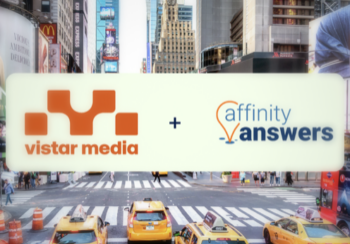3 Insights from the Classic Hip-Hop Radio Format Flip
At Affinity Answers, we are in the business of extending reach based on brands’ social engagement with other brands. The brand, while always evolving, shows evidence of this change slowly on social media; for example, engagers migrate from Facebook to Instagram over a period of twelve months. These changes are generally initiated by the users themselves.
An article on how radio stations across the country are winning over audiences with the Classic Hip-Hop format recently caught my eye. What happens to brand affinities – in this case, a radio station – when the brand literally changes overnight? Here are three insights we learned from looking at affinity changes for KSOC-FM in Dallas after it flipped to the format in November after 12 years as an Urban Adult Contemporary station:
1. Engagement increases for the station overall
The number of engaged KSOC fans doubled from the week before the format switch (ending November 12) to the end of 2014. Additionally, the engagement rate increased by 75%, bringing it well above (+14%) the average engagement rate for a Dallas radio station. This was a successful relaunch for KSOC; similarly, WPHI’s flip to Classic Hip-Hop was met with greater increases in engaged fans, but the rate of engagement actually dropped. The moral of the story here is that rebranding can generate social interactions that matter, so give it your best shot.
2. Some changes in affinities were expected but many also surprised – a reflection of the habits of consumers online and offline
Following the switch, Dallas-based rapper Big Tuck instantly shot to the top of the music affinities of KSOC. While that is not surprising, what is unexpected is that Big Tuck is the only Hip-Hop artist, “classic” or otherwise to appear in the top 10. The artists that do surface are classic R&B artists from the ‘90s, such as Jodeci and Bell Biv DeVoe. The takeaway here is that social engagers, like consumers, are a truly multi-faceted group with many different interests – and affinities. While your brand should always be on message, consumers are not.

3. Momentum for affinities – both old and new – accelerates:
Even for brands that were aligned with KSOC prior to the format flip, the momentum in common fan growth – active engagers with both the station and the brand – seems to be revitalized by the switch. The top brand, Studio Movie Grill, saw its common fan growth increase 13 times by the end of 2014 vs. the week before the switch. Radio stations are local by nature, so do not expect the popular hangouts in the area to be suddenly out of favor.
Affinities are a great way to predict, understand and evaluate major changes in a brand’s DNA. How will you use affinities data when “Your Brand 2.0” is launched?


